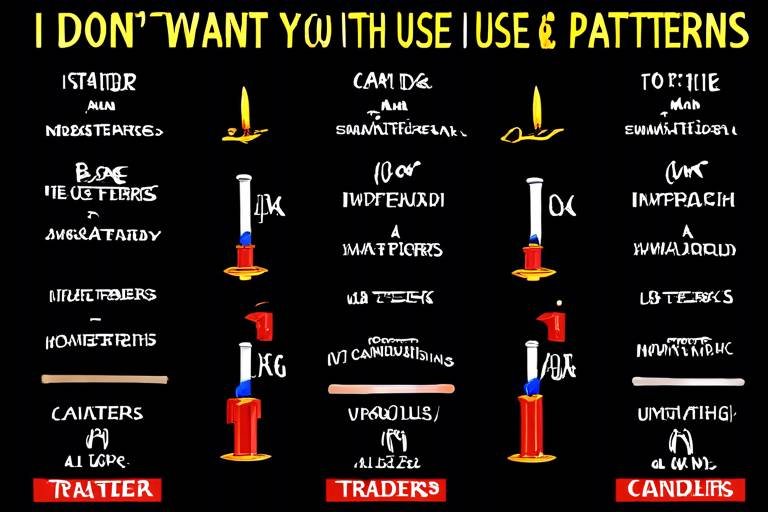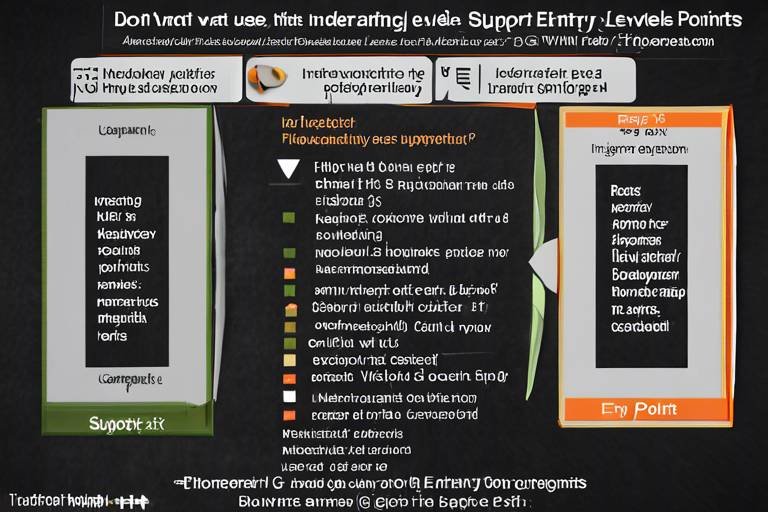The Benefits of Paper Trading for Beginners
Are you new to the world of investing and feeling a bit overwhelmed? You're not alone! Many beginners find themselves daunted by the complexities of the financial markets. However, there's a fantastic tool at your disposal that can ease you into trading without the fear of losing your hard-earned cash: paper trading. This method allows you to practice trading in a simulated environment, helping you build essential skills, confidence, and knowledge. In this article, we will explore the myriad benefits of paper trading for novice investors, ensuring you feel equipped to take on the market when the time comes.
So, what exactly is paper trading? Think of it as a training ground for traders. It simulates real trading environments, allowing beginners to practice their strategies without any financial risk. This method is like a pilot flying a simulator before taking off in a real airplane; it provides invaluable experience and helps you grasp the intricate dynamics of the market. By engaging in paper trading, you can familiarize yourself with trading platforms, order types, and market behaviors, all while sitting comfortably in your own home.
One of the most significant advantages of paper trading is its ability to help you develop essential risk management strategies. As a beginner, understanding how to identify potential risks and implement measures to mitigate them is crucial. When you engage in paper trading, you can test different approaches without the pressure of real money on the line. This experimentation allows you to learn from your mistakes and refine your strategies over time. Imagine it as a dress rehearsal before the big show; you get to practice, make adjustments, and build a solid plan.
Another benefit of paper trading is that it encourages you to set achievable trading goals. This practice fosters discipline and helps you understand your risk tolerance. By setting realistic targets, you can gradually build your skills and confidence. Just like a marathon runner doesn't start by sprinting the full distance, you too can take small steps to reach your trading aspirations.
Monitoring your performance during paper trading sessions is essential for identifying your strengths and weaknesses. This self-assessment is crucial for continuous improvement. Keeping a trading journal can be incredibly beneficial; you can jot down your trades, strategies, and emotions during each session. Over time, this will help you develop a personalized trading approach that suits your style.
Through paper trading, you have the freedom to experiment with various trading strategies. This adaptability is vital for discovering what works best in different market conditions. Whether you want to test day trading, swing trading, or long-term investing strategies, paper trading provides the perfect sandbox to play in. It's like trying on different outfits before deciding what to wear to a big event; you can find the perfect fit without any risk.
The experience gained from paper trading significantly boosts your confidence in your trading abilities. As you see simulated success, you become more prepared to face actual market challenges. Confidence is key in trading; it can make the difference between a successful trade and a missed opportunity. Just like a musician practicing in front of a mirror, you’ll find your rhythm and feel ready to take the stage when the time comes.
Paper trading also provides an excellent platform for beginners to learn the intricacies of technical and fundamental analysis. Understanding these concepts is essential for making informed trading decisions in the future. With paper trading, you can delve into the world of charts, indicators, and market trends without the pressure of financial loss.
Engaging in paper trading allows you to practice chart reading and the usage of various indicators. This hands-on experience is invaluable for developing the analytical skills necessary for successful trading. You can learn how to identify patterns, support and resistance levels, and much more—all crucial elements for predicting market movements.
Additionally, learning to evaluate company performance and market trends is crucial for any trader. Paper trading allows you to apply fundamental analysis techniques without financial pressure, enhancing your understanding of market movements. You can analyze earnings reports, economic indicators, and news events, all while refining your ability to make informed decisions.
Finally, paper trading helps beginners develop emotional control and discipline. By simulating real trading scenarios, you learn to manage emotions like fear and greed—two of the most significant hurdles traders face. Just like a seasoned athlete trains their mind as much as their body, you too can prepare yourself mentally for the ups and downs of real trading.
- What is paper trading? Paper trading is a simulation of real trading that allows beginners to practice without financial risk.
- How does paper trading help me? It helps you build skills, confidence, and knowledge while allowing you to experiment with different strategies.
- Can I use paper trading to learn about market analysis? Absolutely! Paper trading provides a platform to learn both technical and fundamental analysis.
- Is paper trading the same as real trading? No, while it mimics real trading, paper trading does not involve real money, allowing for risk-free practice.

Understanding Paper Trading
This article explores the advantages of paper trading for novice investors, highlighting how it helps build skills, confidence, and knowledge without financial risk.
Paper trading is like a rehearsal for the big performance; it allows novice traders to practice their skills in a simulated environment without the pressure of losing real money. Imagine you're a pilot who gets to fly a plane in a simulator before taking off for the first time. That's exactly what paper trading does for investors. It provides a safe space to experiment, learn, and grow before stepping into the unpredictable world of actual trading.
In essence, paper trading is a form of simulated trading where you can buy and sell financial instruments using virtual funds. This method is particularly beneficial for beginners who are just starting to navigate the complexities of the stock market. It allows them to understand market dynamics, test their strategies, and gain valuable experience without the risk of financial loss. The excitement of seeing your trades perform well, even if it's just in a virtual setting, can be incredibly motivating.
Moreover, paper trading platforms often mirror the functionalities of real trading platforms, providing users with a realistic feel of how trades are executed. This includes features such as:
- Real-time market data
- Access to various trading tools and indicators
- Order types similar to those used in live trading
By engaging in paper trading, beginners can familiarize themselves with these tools and develop a comfort level that will serve them well when they decide to trade with actual funds. It's a bit like learning to ride a bike with training wheels; you can gain balance and confidence before taking them off and riding on your own.
Additionally, paper trading allows for the testing of different trading strategies without any financial repercussions. This experimentation can lead to a deeper understanding of what works and what doesn't, which is crucial for developing a successful trading style. Just as a chef might try out new recipes before serving them to guests, traders can refine their approaches through practice and observation.
Overall, paper trading is an invaluable tool for beginners. It equips them with the necessary skills and knowledge to tackle the real market, all while providing a risk-free environment to learn and grow. So, if you're just starting out, consider diving into paper trading; it might just be the best decision you make on your trading journey!
Engaging in paper trading enables beginners to develop essential risk management strategies. By testing different approaches, traders learn to identify potential risks and implement measures to mitigate them.
Paper trading allows beginners to set achievable trading goals. This practice fosters discipline and helps traders understand their risk tolerance while refining their strategies over time.
Monitoring performance during paper trading sessions helps beginners identify strengths and weaknesses. This self-assessment is crucial for continuous improvement and developing a personalized trading approach.
Through paper trading, beginners can experiment with various trading strategies. This adaptability is vital for finding what works best in different market conditions without risking real capital.
The experience gained from paper trading significantly boosts confidence in trading abilities. As beginners see simulated success, they become more prepared to face actual market challenges.
Paper trading provides an excellent platform for beginners to learn technical and fundamental analysis. Understanding these concepts is essential for making informed trading decisions in the future.
Beginners can practice chart reading and indicator usage through paper trading. This hands-on experience is invaluable for developing analytical skills necessary for successful trading.
Learning to evaluate company performance and market trends is crucial. Paper trading allows beginners to apply fundamental analysis without financial pressure, enhancing their understanding of market movements.
Paper trading helps beginners develop emotional control and discipline. By simulating real trading scenarios, they learn to manage emotions like fear and greed, essential for long-term success.
Q: What is paper trading?
A: Paper trading is a simulation of real trading where investors can practice buying and selling financial instruments using virtual money without any financial risk.
Q: Is paper trading effective for beginners?
A: Yes, paper trading is an excellent way for beginners to build skills, understand market dynamics, and develop confidence before trading with real money.
Q: Can I use paper trading to test different strategies?
A: Absolutely! Paper trading allows you to experiment with various trading strategies in a risk-free environment, helping you find what works best for you.
Q: How long should I paper trade before going live?
A: The duration may vary for each individual, but it’s essential to feel comfortable and confident in your strategies before transitioning to live trading.

Risk Management Skills
Engaging in paper trading is like stepping into a virtual gym for traders. It’s a safe space where beginners can lift the weights of the financial world without the fear of injury—injury in this case being the loss of real money. One of the most critical aspects that paper trading helps develop is . In the world of trading, knowing how to manage risk is akin to a ship captain navigating through stormy seas; it’s essential for survival and success.
When beginners start paper trading, they can experiment with various strategies to see how they perform under different market conditions. This trial-and-error process is invaluable. For instance, a beginner might try a strategy that involves investing heavily in a single stock. By observing the outcomes in a risk-free environment, they can learn about the potential pitfalls of concentrating their investments. It’s like testing the waters before diving in headfirst.
Moreover, paper trading allows traders to identify potential risks associated with different investment approaches. Here are a few key areas where beginners can focus:
- Position Sizing: Understanding how much capital to allocate to each trade is crucial. Paper trading enables beginners to practice different position sizes to see how it affects their overall portfolio.
- Stop-Loss Orders: Learning to set stop-loss orders is essential for minimizing losses. Paper trading allows beginners to experiment with various stop-loss strategies without the pressure of real money.
- Diversification: Beginners can explore the importance of diversifying their portfolios. By simulating different asset allocations, they can see how diversification can help mitigate risks.
As they navigate through these scenarios, beginners can develop a keen sense of their own risk tolerance. This understanding is vital because it shapes their trading decisions in the future. Just like a driver learns to gauge their speed based on road conditions, traders must learn to adjust their strategies based on their comfort level with risk.
Additionally, paper trading encourages the development of a trading plan. A solid trading plan acts as a roadmap, outlining the trader's goals, risk tolerance, and strategies. By practicing with paper trading, beginners can refine their plans and make adjustments based on their experiences. It’s a bit like rehearsing a play before the big performance; the more you practice, the more confident you become.
Tracking progress during paper trading sessions is also an essential part of developing risk management skills. Beginners should keep a trading journal where they document their trades, the rationale behind each decision, and the outcomes. This practice not only helps in identifying strengths and weaknesses but also fosters a habit of self-reflection—a key component for continuous improvement. As they review their trades, they can pinpoint where they might have acted impulsively or failed to adhere to their risk management strategies.
In conclusion, paper trading serves as a powerful tool for beginners to build their risk management skills. By allowing them to test various strategies, set realistic goals, and track their progress, paper trading lays a solid foundation for future trading success. It’s like building a house; without a strong foundation, everything else is at risk of collapsing. So, dive into the world of paper trading, and watch as your confidence and skills grow, preparing you for the exciting journey of real trading!
Q: What is paper trading?
A: Paper trading is a simulated trading environment where beginners can practice trading without using real money. It allows them to gain experience and understand market dynamics.
Q: How does paper trading help with risk management?
A: Paper trading enables beginners to test different trading strategies, learn about position sizing, set stop-loss orders, and develop a trading plan, all without the financial risk.
Q: Can I learn technical and fundamental analysis through paper trading?
A: Absolutely! Paper trading provides a platform to practice technical analysis, like reading charts and using indicators, as well as fundamental analysis, such as evaluating company performance.
Q: Is it possible to become a successful trader just by paper trading?
A: While paper trading is a fantastic way to build skills and confidence, transitioning to real trading involves additional challenges, including emotional control and market unpredictability.

Setting Realistic Goals
When diving into the world of trading, one of the first and most important steps is . Think of it like planning a road trip; you wouldn’t just hop in the car without knowing your destination, right? Similarly, having clear, achievable goals gives you a roadmap to follow as you navigate the often tumultuous waters of trading. Paper trading is an excellent platform for this, allowing beginners to experiment without the pressure of real money on the line.
To start, it’s crucial to define what you want to achieve through paper trading. Are you looking to understand the basics of market behavior? Or perhaps you want to refine a specific trading strategy? Whatever your goals may be, they should be SMART: Specific, Measurable, Achievable, Relevant, and Time-bound. This framework helps ensure that your objectives are clear and attainable, guiding your practice sessions effectively.
For example, instead of saying, “I want to make money,” a more realistic goal could be, “I want to practice trading for three months and aim to achieve a 5% return on my paper portfolio each month.” This not only sets a measurable target but also gives you a deadline to work towards. Tracking your progress is vital, and paper trading allows you to do just that. You can keep a journal of your trades, noting what worked and what didn’t, which will help you refine your approach over time.
Moreover, setting realistic goals fosters discipline. It encourages you to stick to your trading plan rather than impulsively reacting to market fluctuations. This discipline is a cornerstone of successful trading, as it helps you manage your emotions and stay focused on your long-term objectives. By consistently reviewing and adjusting your goals based on your performance, you can develop a personalized trading approach that aligns with your evolving skills and market conditions.
In summary, setting realistic goals in paper trading is not just about having something to aim for; it’s about creating a structured approach to learning and growth. As you achieve these goals, no matter how small, you’ll find that your confidence and understanding of the market will grow, preparing you for the transition to live trading.
- What is paper trading? Paper trading is a simulated trading environment where beginners can practice buying and selling securities without using real money.
- How can I set realistic goals for paper trading? Use the SMART criteria: Specific, Measurable, Achievable, Relevant, and Time-bound to define your goals.
- Is paper trading beneficial for beginners? Absolutely! It helps build skills, confidence, and knowledge while eliminating financial risk.
- How long should I paper trade before moving to real trading? It varies for each individual, but a few months of consistent practice can be beneficial.

Tracking Progress
Tracking your progress while paper trading is not just a good idea; it's a crucial part of your growth as a trader. Think of it as a fitness journey—if you want to get fit, you don’t just work out; you also track your workouts, monitor your diet, and adjust your routines based on your results. Similarly, in trading, keeping an eye on your performance can help you identify what’s working and what’s not.
When you engage in paper trading, it’s essential to maintain a detailed record of your trades. This record can include various elements such as:
- Date of Trade: When you executed the trade.
- Asset Traded: The stock, currency, or commodity you traded.
- Entry and Exit Points: Prices at which you bought and sold.
- Trade Size: How much of the asset you traded.
- Outcome: Profit or loss from the trade.
- Notes: Any observations or feelings during the trade.
This kind of detailed logging not only helps you see your trading patterns but also allows you to conduct a thorough self-assessment. By reviewing your trades regularly, you can spot trends in your decision-making process. For instance, if you notice that you tend to panic sell during market dips, you can work on strategies to manage that emotional response. This self-awareness is vital for continuous improvement.
Moreover, creating visual representations of your progress can be incredibly motivating. Consider maintaining a performance chart that tracks your simulated profits over time. A simple table could look like this:
| Date | Profit/Loss | Cumulative Profit/Loss |
|---|---|---|
| 01/01/2023 | $50 | $50 |
| 01/02/2023 | -$20 | $30 |
| 01/03/2023 | $70 | $100 |
As you can see, tracking your progress through both qualitative and quantitative means can significantly enhance your trading education. By identifying your strengths and weaknesses, you can refine your strategies and become a more effective trader. So, make tracking your progress a regular part of your paper trading routine, and watch how it propels you forward on your trading journey!
- What is paper trading? Paper trading is a simulated trading environment where beginners can practice trading without risking real money.
- How can I track my progress in paper trading? You can track your progress by maintaining a detailed log of your trades, including dates, assets, entry and exit points, and outcomes.
- Is paper trading beneficial for beginners? Yes, it helps beginners build skills, confidence, and knowledge without financial risk, allowing them to learn market dynamics effectively.
- How long should I paper trade before investing real money? The duration varies for each individual, but it’s essential to feel confident in your strategies and understand your risk tolerance before transitioning to real trading.

Adapting Strategies
When it comes to trading, one size does not fit all. The markets are as dynamic as a rollercoaster ride, and what works today might not work tomorrow. This is where the beauty of paper trading comes into play. It provides a safe playground for beginners to experiment with various trading strategies without the fear of losing real money. Think of it like trying on different outfits before deciding what to wear for a big event—you want to feel comfortable and confident in your choice.
During your paper trading sessions, you have the freedom to test out multiple strategies. For instance, you might start with a trend-following strategy, where you buy assets that are on the rise and sell those that are declining. But what if you find that this approach doesn’t yield the results you expected? With paper trading, you can easily pivot to a contrarian strategy, betting against the prevailing market trends. This flexibility is crucial because it allows you to discover what resonates with your trading style and market understanding.
Moreover, adapting your strategies based on market conditions is essential. For example, during a bullish market, momentum trading may be the way to go, while in a bearish market, you might want to explore short selling or hedging techniques. By practicing these adaptations in a risk-free environment, you can develop a keen sense of when to switch gears. It’s like being a chef who learns to adjust recipes based on the ingredients at hand—sometimes, you need to improvise to create a delicious dish.
To make the most of your paper trading experience, consider keeping a detailed journal of your trades. Documenting your thought process, the strategies you employed, and the outcomes will provide valuable insights. Over time, you’ll be able to see patterns in your decision-making and refine your approach. This reflective practice is akin to reviewing game footage as an athlete; it helps you learn from both your successes and mistakes.
In conclusion, adapting strategies through paper trading is not just about trying different methods; it’s about cultivating a mindset that embraces change and learning. The more you practice, the more intuitive your trading will become. You’ll find yourself making decisions with confidence and clarity, ready to tackle the real markets when the time comes. So, grab your virtual trading tools and dive into the exciting world of strategy adaptation!
- What is paper trading?
Paper trading is a simulated trading environment that allows individuals to practice trading without risking real money.
- How long should I paper trade before moving to real trading?
It varies by individual, but many recommend paper trading until you feel consistently profitable and confident in your strategies.
- Can I use the same strategies in real trading that I used in paper trading?
While many strategies may carry over, real trading involves emotional factors and market conditions that can affect outcomes.
- Is paper trading useful for experienced traders?
Absolutely! Even experienced traders can benefit from paper trading to test new strategies or adapt to changing market conditions.

Building Trading Confidence
When it comes to trading, confidence is key. Imagine stepping into a boxing ring without a clue about your opponent; that’s what trading feels like without confidence. Paper trading serves as your training ground, allowing you to build that confidence without the fear of losing your hard-earned money. By simulating real trades, you can experience the thrill of making successful trades while learning from the ones that don't go as planned.
One of the most exciting aspects of paper trading is the opportunity to see your strategies in action. As you execute trades and watch your virtual portfolio grow (or shrink), you start to understand what works and what doesn’t. This hands-on experience is invaluable. It’s like learning to ride a bike; you might wobble and fall at first, but with practice, you gain the balance and skill needed to ride confidently. The more you trade, the more you learn about market trends, your own trading style, and the nuances of different assets.
Moreover, the psychological benefits of paper trading cannot be overstated. You can practice handling emotions such as fear and greed in a low-stakes environment. For instance, when you see a significant gain in your paper account, it can be tempting to become overly confident, leading to risky decisions. Conversely, if you face a loss, you might feel discouraged. By experiencing these emotional highs and lows in a simulated environment, you can develop a more balanced approach to trading. This emotional resilience is crucial when you transition to real trading, where the stakes are much higher.
As you progress, it’s essential to set realistic goals for your paper trading journey. Start by defining what success looks like for you. Is it achieving a certain percentage of returns or simply sticking to your trading plan? Setting these benchmarks allows you to track your progress and adjust your strategies accordingly. For example, if you find that you consistently make impulsive trades, you can focus on developing a more disciplined approach. This process not only boosts your confidence but also enhances your overall trading skills.
Ultimately, the experience gained from paper trading transforms the way you approach the markets. You’ll find yourself more prepared to tackle real-life trading challenges. Just like a seasoned athlete who has trained rigorously, you’ll step into the trading arena with a sense of confidence and readiness. So, if you’re a beginner looking to build your trading confidence, dive into paper trading. It’s your chance to learn, grow, and prepare for the exciting journey ahead!
- What is paper trading? Paper trading is a simulated trading practice where individuals can buy and sell assets without using real money, helping them learn trading strategies and market dynamics.
- How does paper trading help build confidence? It allows beginners to practice trading strategies in a risk-free environment, helping them understand market behavior and improve their decision-making skills.
- Can I use paper trading to test different strategies? Absolutely! Paper trading is an excellent way to experiment with various trading strategies and find what works best for you.
- Is paper trading the same as real trading? No, while paper trading simulates real trading conditions, it does not involve real money, which means the emotional aspects of trading may not be fully replicated.

Learning Market Analysis
This article explores the advantages of paper trading for novice investors, highlighting how it helps build skills, confidence, and knowledge without financial risk.
Paper trading simulates real trading environments, allowing beginners to practice without real money. This method helps in gaining experience and understanding market dynamics before making actual investments.
Engaging in paper trading enables beginners to develop essential risk management strategies. By testing different approaches, traders learn to identify potential risks and implement measures to mitigate them.
Paper trading allows beginners to set achievable trading goals. This practice fosters discipline and helps traders understand their risk tolerance while refining their strategies over time.
Monitoring performance during paper trading sessions helps beginners identify strengths and weaknesses. This self-assessment is crucial for continuous improvement and developing a personalized trading approach.
Through paper trading, beginners can experiment with various trading strategies. This adaptability is vital for finding what works best in different market conditions without risking real capital.
The experience gained from paper trading significantly boosts confidence in trading abilities. As beginners see simulated success, they become more prepared to face actual market challenges.
Paper trading provides an excellent platform for beginners to learn technical and fundamental analysis. Understanding these concepts is essential for making informed trading decisions in the future. Think of it as learning to navigate a ship before you set sail on the open sea; you need to know how to read the stars, the weather, and the currents to avoid disaster.
When it comes to technical analysis, beginners can practice chart reading and indicator usage through paper trading. This hands-on experience is invaluable for developing analytical skills necessary for successful trading. For instance, by observing price movements and trends, traders can learn to identify patterns that may predict future price actions. The more they practice, the more intuitive these analyses become, much like learning to read a map in unfamiliar territory.
On the other hand, fundamental analysis involves evaluating a company's performance and market trends. It's like being a detective, piecing together clues to understand the bigger picture. Paper trading allows beginners to apply fundamental analysis without financial pressure. They can delve into company earnings reports, news releases, and market conditions to see how these factors influence stock prices. This exploration enhances their understanding of market movements and prepares them for real-world trading scenarios.
Ultimately, mastering both technical and fundamental analysis through paper trading equips beginners with the necessary tools to make informed decisions. It’s not just about knowing the numbers; it’s about understanding the story behind those numbers and how they can impact trading outcomes.
Paper trading helps beginners develop emotional control and discipline. By simulating real trading scenarios, they learn to manage emotions like fear and greed, essential for long-term success.
- What is paper trading? Paper trading is a simulated trading environment where beginners can practice trading without risking real money.
- How does paper trading help beginners? It helps build skills, confidence, and knowledge about market dynamics and trading strategies.
- Can I use paper trading to test my strategies? Absolutely! Paper trading allows you to experiment with different strategies and learn what works best for you.
- Is paper trading the same as real trading? No, while it simulates real trading conditions, it does not involve real financial risks, which means the psychological pressures are different.
- How long should I paper trade before moving to real trading? It varies by individual, but many experts recommend practicing until you feel confident in your strategies and emotional control.

Technical Analysis Fundamentals
When it comes to trading, understanding technical analysis is like having a treasure map that leads you to potential profits. For beginners, diving into this world can seem overwhelming, but fear not! Paper trading provides the perfect sandbox to practice these skills without the fear of losing real money. So, what exactly does technical analysis involve? It’s all about analyzing price movements and trading volumes to forecast future price behavior. Imagine trying to predict the weather; you wouldn’t just rely on a hunch, right? You’d look at past patterns and current conditions. That’s the essence of technical analysis!
One of the foundational tools in technical analysis is the chart. Charts visually represent price movements over time, and they come in various forms—line charts, bar charts, and candlestick charts. Each type has its unique way of displaying information. For instance, candlestick charts can provide insights into market sentiment, showing whether buyers or sellers are in control during a specific time frame. Here’s a quick rundown of common chart types:
| Chart Type | Description |
|---|---|
| Line Chart | A simple chart that connects closing prices over a period of time. |
| Bar Chart | Displays open, high, low, and closing prices for a specific time frame. |
| Candlestick Chart | Shows the same information as a bar chart but in a more visually appealing format. |
In addition to charts, beginners should familiarize themselves with various indicators. Indicators are mathematical calculations based on price and volume, designed to help traders identify trends and potential entry or exit points. Some popular indicators include Moving Averages, Relative Strength Index (RSI), and Bollinger Bands. Each of these tools provides unique insights. For example:
- Moving Averages: These smooth out price data to identify trends over a specific period.
- RSI: This momentum oscillator measures the speed and change of price movements, helping traders identify overbought or oversold conditions.
- Bollinger Bands: These consist of a middle band (the moving average) and two outer bands that show volatility and price levels.
As beginners engage in paper trading, they can practice using these indicators in real-time scenarios. It’s like a rehearsal before the big show! By applying different indicators to their charts, they can see how various strategies might play out in different market conditions. This hands-on experience is invaluable and can significantly enhance a trader's analytical skills.
Moreover, understanding support and resistance levels is crucial in technical analysis. Support is the price level where a stock tends to stop falling and may bounce back up, while resistance is where it tends to stop rising and may drop back down. Knowing these levels can help traders make more informed decisions about when to enter or exit trades. Picture it like a rubber ball bouncing on the floor; it has a tendency to bounce back up when it hits a certain point (support) and may not go above a certain height (resistance).
In conclusion, mastering technical analysis fundamentals through paper trading not only builds a solid foundation for beginners but also instills a sense of confidence. As they become adept at reading charts and utilizing indicators, they’ll be better equipped to navigate the complexities of the trading world. So, grab your virtual trading account and start exploring the fascinating realm of technical analysis!
- What is paper trading? Paper trading is a simulated trading experience that allows individuals to practice trading strategies without risking real money.
- How can technical analysis help me as a beginner? Technical analysis provides tools and methods to analyze market trends, helping you make informed trading decisions.
- Do I need to know technical analysis to be successful in trading? While it's not mandatory, understanding technical analysis can significantly enhance your trading skills and confidence.
- Can I use paper trading to test different strategies? Absolutely! Paper trading is an excellent way to experiment with various trading strategies and see what works best for you.

Fundamental Analysis Insights
Understanding fundamental analysis is crucial for any aspiring trader, especially for those just starting their journey. It involves evaluating a company's financial health, performance, and market position to make informed trading decisions. Think of it as being a detective; you need to dig deep to uncover the truth about a company before you decide to invest your hard-earned money. Paper trading provides the perfect stage for beginners to practice this analysis without the looming pressure of financial loss.
During paper trading, you can explore various financial metrics that indicate a company's performance. Key indicators include:
- Revenue Growth: A consistent increase in revenue over time suggests that a company is expanding its business effectively.
- Profit Margins: Understanding how much profit a company makes from its sales can help you gauge its efficiency.
- Debt-to-Equity Ratio: This ratio helps assess a company's financial leverage and stability. A lower ratio typically indicates less risk.
- Price-to-Earnings (P/E) Ratio: This metric allows you to compare a company's current share price to its earnings per share, helping you determine if a stock is over or undervalued.
By analyzing these metrics during your paper trading sessions, you can develop a keen eye for identifying potential investment opportunities. Moreover, you can practice creating a comprehensive investment thesis—a statement that outlines why you believe a particular stock is a good buy based on your analysis. This exercise is invaluable as it not only sharpens your analytical skills but also prepares you for real-world trading scenarios.
Another essential aspect of fundamental analysis is keeping an eye on market trends. Understanding the broader economic environment, such as interest rates, inflation, and geopolitical events, can significantly impact your trading decisions. For instance, if you notice a trend where consumer confidence is rising, it might indicate that companies in the retail sector will perform well. Paper trading allows you to test your hypotheses about these trends without the fear of financial repercussions.
As you engage in paper trading, remember that the insights you gain from fundamental analysis will not only enhance your trading strategy but also build your confidence. The more you practice evaluating companies and understanding market dynamics, the more prepared you'll be to make informed decisions in the real world. Ultimately, this foundation will serve you well as you transition from paper trading to actual trading, where the stakes are much higher and the rewards can be substantial.
- What is fundamental analysis?
Fundamental analysis is the evaluation of a company's financial health and market position by examining its financial statements, economic indicators, and overall market trends. - How can paper trading help with fundamental analysis?
Paper trading allows beginners to practice analyzing companies and market conditions without risking real money, helping to build confidence and skills. - What key metrics should I focus on in fundamental analysis?
Key metrics include revenue growth, profit margins, debt-to-equity ratio, and price-to-earnings ratio. - How does market trends influence trading decisions?
Market trends can indicate potential investment opportunities or risks. Understanding these trends helps traders make informed decisions.

Emotional Control and Discipline
When it comes to trading, the emotional rollercoaster can be one of the most challenging aspects for beginners to navigate. Imagine standing on the edge of a cliff, feeling the rush of adrenaline as you prepare to jump. That’s how trading can feel—thrilling, but also terrifying. Paper trading acts as a safety harness, allowing novice traders to practice emotional control without the fear of losing real money. By simulating real trading scenarios, beginners can experience the ups and downs of the market while learning to manage their emotions effectively.
One of the key benefits of paper trading is the opportunity it provides to develop discipline. In the fast-paced world of trading, making impulsive decisions can lead to significant losses. However, through paper trading, individuals can practice sticking to their trading plans and strategies. This practice is akin to training for a marathon; you wouldn’t just show up on race day without having trained. Similarly, you shouldn’t enter the market without having honed your emotional resilience and discipline through practice.
Additionally, paper trading allows traders to experience the emotional impacts of various market conditions without the financial repercussions. For instance, when a trade goes against you, it’s easy to feel panic or despair. However, in a simulated environment, you can observe these emotions and learn how to cope with them. This self-awareness is crucial because it prepares you for real-life trading, where emotions can lead to hasty decisions. By recognizing and addressing these feelings in a risk-free environment, you can develop strategies to maintain composure when the stakes are high.
Moreover, maintaining emotional control is essential for long-term success in trading. Here are a few strategies that beginners can practice during their paper trading sessions:
- Setting Clear Goals: Define what you want to achieve with each trading session. This focus helps in reducing emotional distractions.
- Sticking to a Trading Plan: Develop a systematic approach to trading. This plan should include entry and exit strategies, which can help mitigate emotional decision-making.
- Reflecting on Trades: After each paper trading session, take time to review your trades. Understanding what worked and what didn’t can provide insights into your emotional responses.
Ultimately, the journey of mastering emotional control and discipline in trading is ongoing. Just as a musician practices their scales daily, traders must continuously refine their emotional skills. The more you engage in paper trading, the more adept you become at recognizing emotional triggers and responding to them in a constructive manner. This growth will not only help you in trading but also in other areas of life where emotional intelligence is key.
- What is paper trading?
Paper trading is a simulated trading practice that allows individuals to buy and sell assets without using real money, providing a risk-free environment to learn and develop trading skills.
- How can paper trading help with emotional control?
By simulating real trading scenarios, paper trading allows beginners to experience emotional highs and lows, helping them learn to manage their emotions effectively before engaging in real trades.
- Is paper trading the same as real trading?
No, while paper trading mimics real market conditions, it does not involve actual financial risk, which can lead to different emotional responses compared to real trading.
- How long should I paper trade before starting real trading?
There’s no set timeline; however, it’s essential to feel confident in your strategies and emotional control before transitioning to real trading.
Frequently Asked Questions
- What is paper trading?
Paper trading is a simulated trading process that allows beginners to practice buying and selling securities without using real money. It provides a risk-free environment to learn about the market dynamics and trading strategies.
- How does paper trading help beginners?
Paper trading helps beginners build essential skills, confidence, and knowledge. It allows them to experiment with different strategies, understand market movements, and develop risk management techniques without any financial risk.
- Can I lose money while paper trading?
No, you cannot lose real money while paper trading as it involves simulated transactions. However, it’s essential to treat it seriously to gain valuable experience that translates into real trading.
- How can I track my progress in paper trading?
Tracking progress in paper trading can be done by maintaining a trading journal where you record your trades, strategies, and outcomes. This self-assessment helps identify strengths and weaknesses, promoting continuous improvement.
- Is paper trading enough to prepare for real trading?
While paper trading is an excellent starting point, it's important to combine it with real market experiences. It builds a foundation, but actual trading involves emotional factors that can't be fully replicated in a simulated environment.
- What skills can I develop through paper trading?
Through paper trading, you can develop various skills such as risk management, technical and fundamental analysis, emotional control, and discipline. These skills are crucial for becoming a successful trader in real markets.
- How long should I paper trade before starting real trading?
The duration of paper trading varies from person to person. It's advisable to continue until you feel confident in your strategies and understand market dynamics well. A few months of consistent practice can be beneficial.
- Can I use paper trading to test different trading strategies?
Absolutely! Paper trading is an ideal platform to experiment with various trading strategies. You can test what works best for you in different market conditions without the risk of losing real money.
- Do I need special software for paper trading?
Many brokerage platforms offer paper trading features, so you don’t necessarily need special software. Just sign up with a broker that provides a demo account, and you can start practicing right away!



















